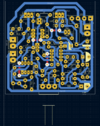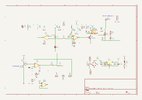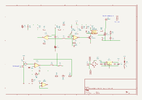Hello ! I found on the internet the attached soldering station schematic and I wanted to know if this schematic is good for a basic soldering station with 50W/24V soldering iron which uses K type thermocouple.
I find that the LM358 which is used a thermocouple amplifier is not the best for this application, but I think that it is better than nothing.
I also attached the pcb layout in Kicad.
Please have a look at the project and tell me what you think ?
I find that the LM358 which is used a thermocouple amplifier is not the best for this application, but I think that it is better than nothing.
I also attached the pcb layout in Kicad.
Please have a look at the project and tell me what you think ?




